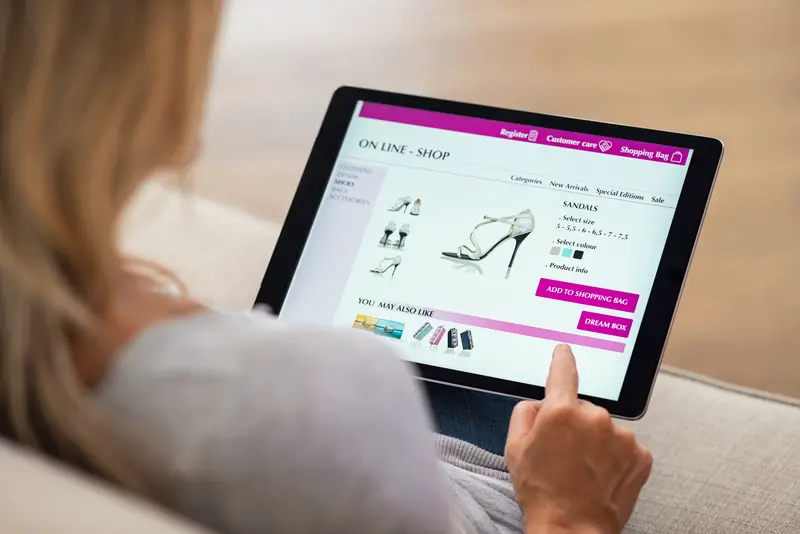That amazing deal on a designer dress that looked perfect on the model? The gadget that promised to solve all your problems for just $19.99? Online shopping makes it incredibly easy to click “buy now” without thinking twice, but some purchases inevitably lead to serious buyer’s remorse. Whether it’s the wrong size, poor quality, or simply not what was advertised, certain types of online orders consistently disappoint shoppers who thought they were getting a steal.
Final sale items that can’t be returned
That 70% off clearance item might seem like the deal of the century, but final sale purchases often become expensive mistakes. When something is marked as final sale, there’s usually a good reason – it might be a weird color that didn’t sell, an odd size, or simply overstock that the retailer wants to clear out quickly. The problem is that without the safety net of returns, buyers are stuck with items that don’t fit properly or look nothing like the online photos.
Many shoppers discover too late that final sale items often have subtle defects or quality issues that weren’t mentioned in the product description. The fabric might feel cheap, the color could be completely different from what appeared on screen, or the sizing might run unusually small or large. Smart shoppers only consider final sale purchases for items they’ve already tried on in person or brands they know fit them perfectly. Otherwise, that “amazing deal” becomes money thrown away on something that sits unworn in the closet.
Uncomfortable shoes that look amazing in photos
Nothing creates more regret than ordering gorgeous dress shoes online only to discover they’re instruments of torture for your feet. Photos can make any shoe look comfortable and stylish, but they can’t convey how the arch support feels, whether the toe box is too narrow, or if the heel height is practical for actual walking. Many online shoe purchases end up being worn once before being relegated to the back of the closet.
The worst part about uncomfortable shoe purchases is the temptation to convince yourself you’ll eventually break them in or get used to the pain. This rarely happens, especially with cheaply made shoes that prioritize appearance over comfort. Even expensive designer shoes can be uncomfortable if they don’t suit your particular foot shape. The solution is to stick with brands and styles you know work for your feet, or ensure the retailer has an excellent return policy that allows you to actually walk around and test the shoes at home.
Trendy pieces that cost way too much
Spending big money on trend pieces almost always leads to regret because fashion moves so quickly. That expensive statement coat or trendy handbag that seems essential today might look completely dated in six months. Trends are designed to be temporary, so investing serious money in pieces that won’t have staying power is essentially throwing money away. The excitement of wearing something super current fades quickly when the trend dies and the expensive item becomes unwearable.
Social media makes this problem worse by constantly showing new trends and making everything seem urgent and necessary. Influencers and fashion bloggers cycle through trends so quickly that what seemed like a must-have item last week is already old news. Smart shoppers invest their money in classic, timeless pieces and only buy trendy items if they’re inexpensive enough to wear for a season and then donate without feeling bad about the money spent.
Clothes in smaller sizes for motivation
Ordering clothes in a smaller size as “motivation to lose weight” is one of the most common online shopping mistakes that leads to disappointment and negative feelings. These aspirational purchases usually end up collecting dust with tags still attached, serving as expensive reminders of unrealistic expectations rather than actual motivation. The psychological impact of seeing unworn clothes in the closet often creates guilt and shame rather than inspiration to make healthy changes.
The sizing issue becomes even more complicated when shopping online because different brands and manufacturers have wildly different sizing standards. A size 8 from one company might fit like a size 12 from another brand, making it impossible to predict how something will fit even in your current size. Instead of buying smaller sizes as motivation, it’s better to focus on purchasing well-fitting clothes in current sizes that make you feel confident and comfortable right now.
Items that looked perfect on someone else
Seeing something look amazing on an influencer, friend, or model and immediately ordering the same item often leads to disappointment. What looks fantastic on someone who’s six feet tall with a completely different body type might look awkward or unflattering on someone else. Instagram and social media create unrealistic expectations about how clothes will look because professional photos, lighting, and photo editing can make anything appear perfect.
The problem becomes worse when the person wearing the item has access to professional styling, tailoring, or photo editing that regular shoppers don’t have. That flowy maxi dress might be professionally pinned and styled for the photo shoot, or the jeans might be custom tailored to fit perfectly. Regular shoppers receive the item in standard sizing without professional styling and wonder why it doesn’t look the same. It’s better to choose styles based on what typically flatters your body type rather than copying someone else’s look exactly.
Emotional impulse buys during bad days
Shopping as emotional therapy often results in purchases that don’t actually solve the underlying problem and create additional stress when the credit card bill arrives. Impulse buying during emotional moments like stress, sadness, or boredom typically leads to poor decision-making and purchases that don’t align with actual needs or personal style. The temporary high of buying something new wears off quickly, leaving behind buyer’s remorse and potentially financial strain.
Online shopping makes emotional purchasing even easier because it’s available 24/7 and requires just a few clicks. Late-night scrolling sessions after a difficult day can result in multiple impulse purchases that seem necessary in the moment but feel completely unnecessary the next morning. The best strategy is to add items to the cart but wait at least 24 hours before completing the purchase. This cooling-off period allows emotions to settle and helps distinguish between genuine needs and temporary emotional impulses.
Clothes that don’t match your actual lifestyle
Buying clothes for an imaginary lifestyle rather than your actual daily routine is a recipe for closet full of unworn items. That silk blouse might be beautiful, but if your days are spent chasing toddlers or working in a casual office environment, it’s not practical. Similarly, purchasing formal dresses when your social calendar consists mainly of casual gatherings means those expensive pieces will rarely see the light of day.
Many people shop for the person they wish they were rather than the person they actually are. The fantasy of attending glamorous events or having a more formal work environment influences purchasing decisions, but reality rarely matches these aspirations. It’s more practical to build a wardrobe around your actual daily activities and gradually add special occasion pieces as needed. A closet full of comfortable everyday clothes that get regular wear is more valuable than expensive items that never leave the hangers.
Products without checking size specifications
Failing to read size specifications carefully leads to some of the most amusing and frustrating online shopping failures. Ordering a chair that turns out to be dollhouse-sized, or receiving a lamp that’s meant for a desk but looks like it belongs in a mansion, happens more often than most people admit. Online listings can be misleading, and without physical reference points, it’s easy to misjudge the actual size of items based on product photos alone.
This problem extends beyond furniture to clothes, accessories, and even food items. A cast iron skillet might look substantial in photos but arrive as a tiny 6-inch pan suitable only for single eggs. The key is always checking the dimensions listed in the product description and comparing them to familiar objects to get a realistic sense of size. Many retailers now include size comparison photos or common objects for scale, but it’s still the buyer’s responsibility to pay attention to these details before ordering.
Cheap knockoffs of expensive designer items
Those incredibly cheap versions of designer handbags, shoes, or clothing that pop up in online ads almost never live up to expectations. While the photos might look convincing, the reality is usually poor quality materials, sloppy construction, and details that look obviously fake in person. The disappointment of receiving a cheaply made knockoff is compounded by the fact that return policies for these items are often non-existent or complicated.
Beyond quality issues, these purchases often take weeks or months to arrive from overseas manufacturers, and the excitement of the purchase has long since faded by the time the disappointing item shows up. The photos used in ads are frequently stolen from legitimate retailers and don’t represent the actual product being sold. Instead of gambling on cheap knockoffs, it’s better to save up for authentic items from reputable brands or look for legitimate discounted designer goods from established retailers with good return policies.
Learning from these common online shopping mistakes can save both money and closet space while reducing the frustration of dealing with returns and disappointing purchases. The key is being honest about your actual needs, lifestyle, and preferences rather than getting caught up in the excitement of what seems like a great deal or perfect item. Taking time to read reviews, check return policies, and really consider whether a purchase makes sense will lead to much more satisfying online shopping experiences.

